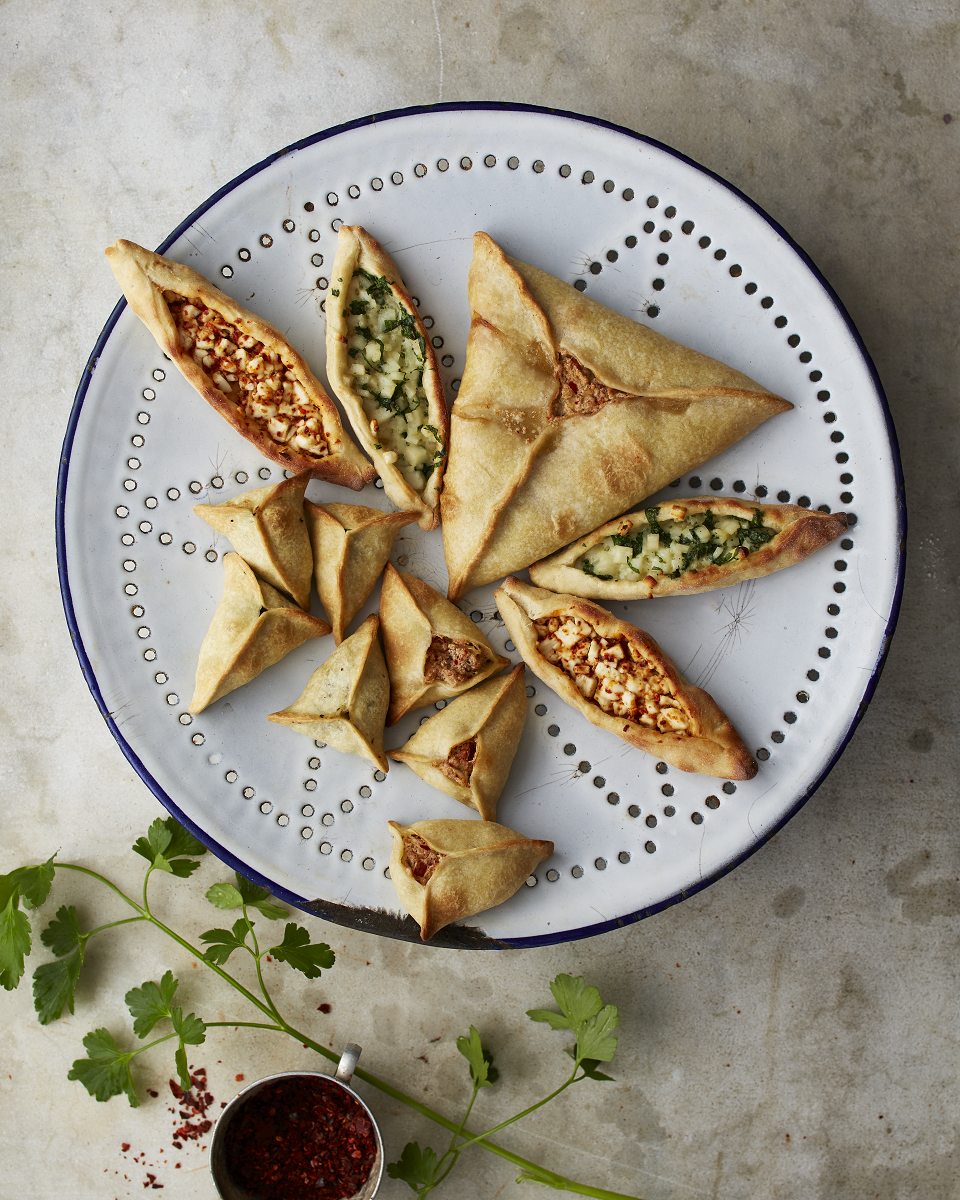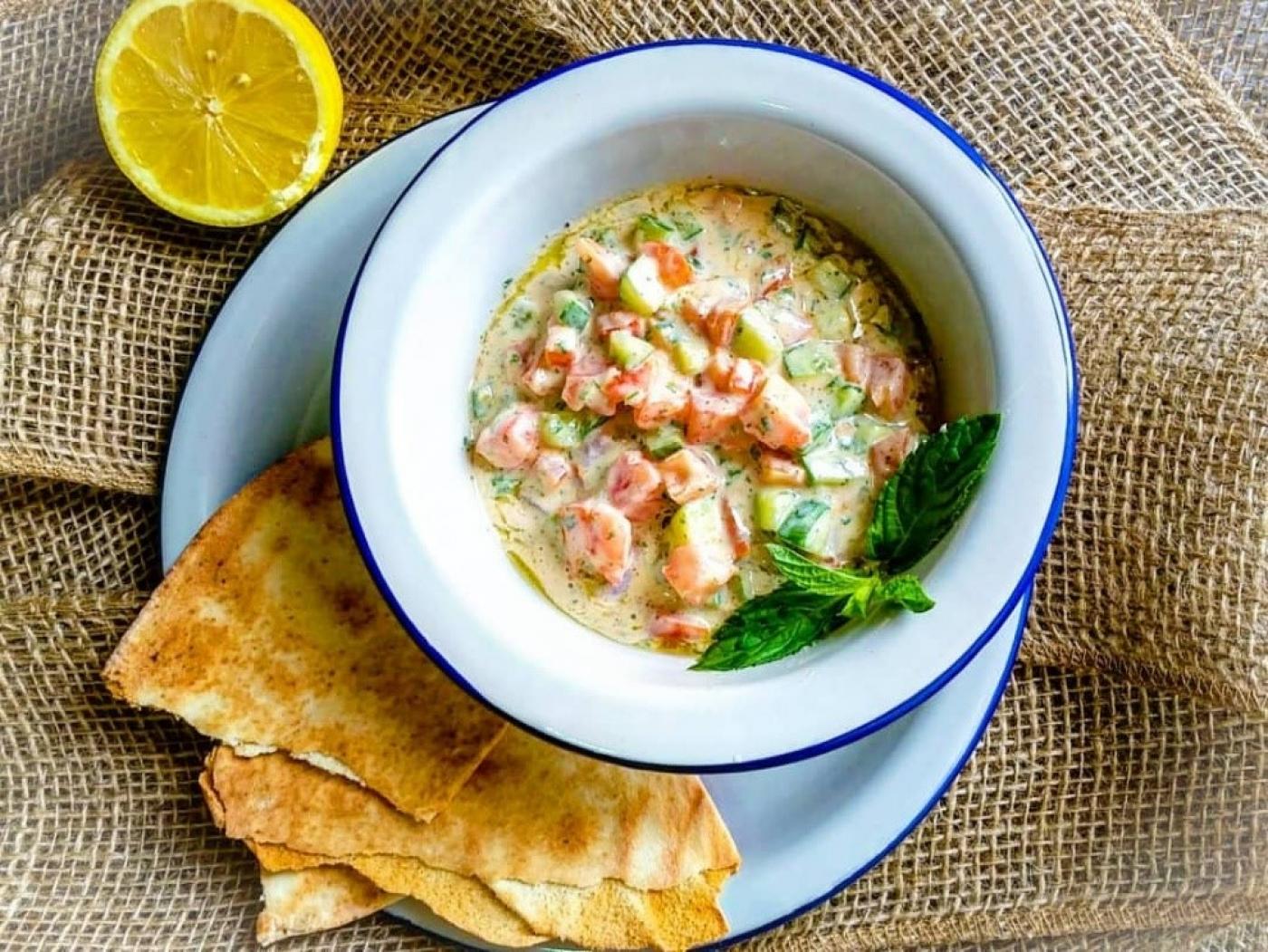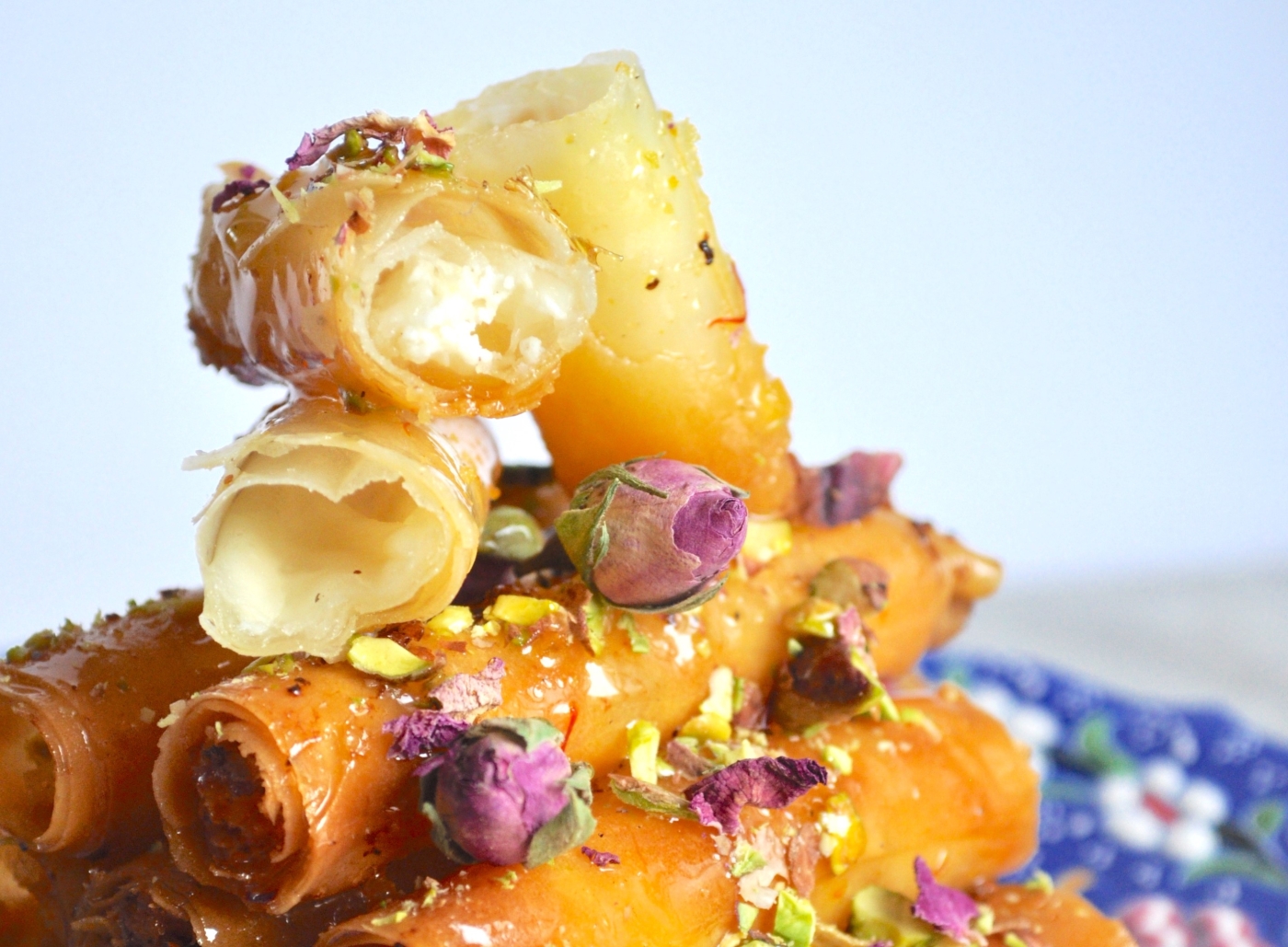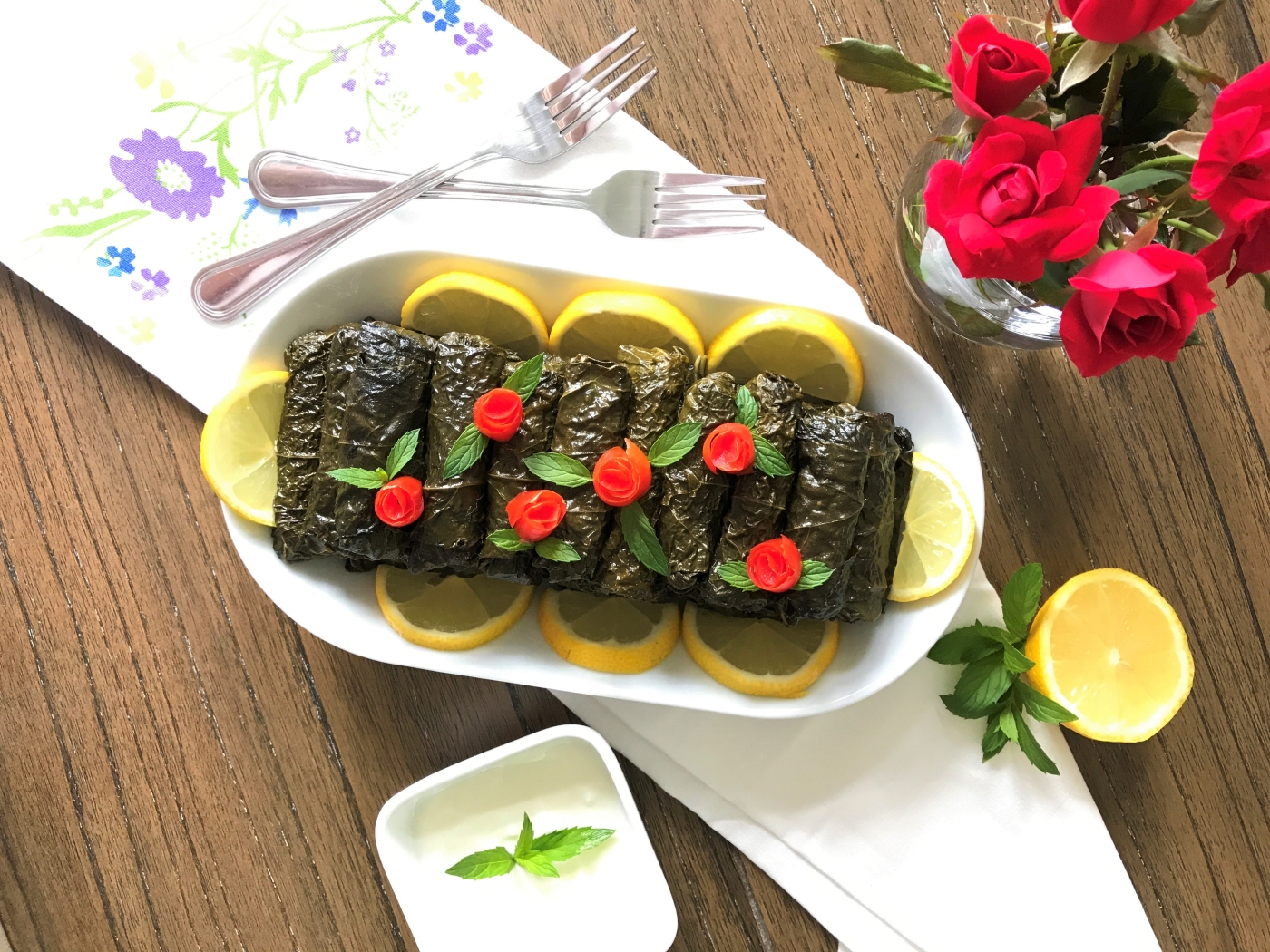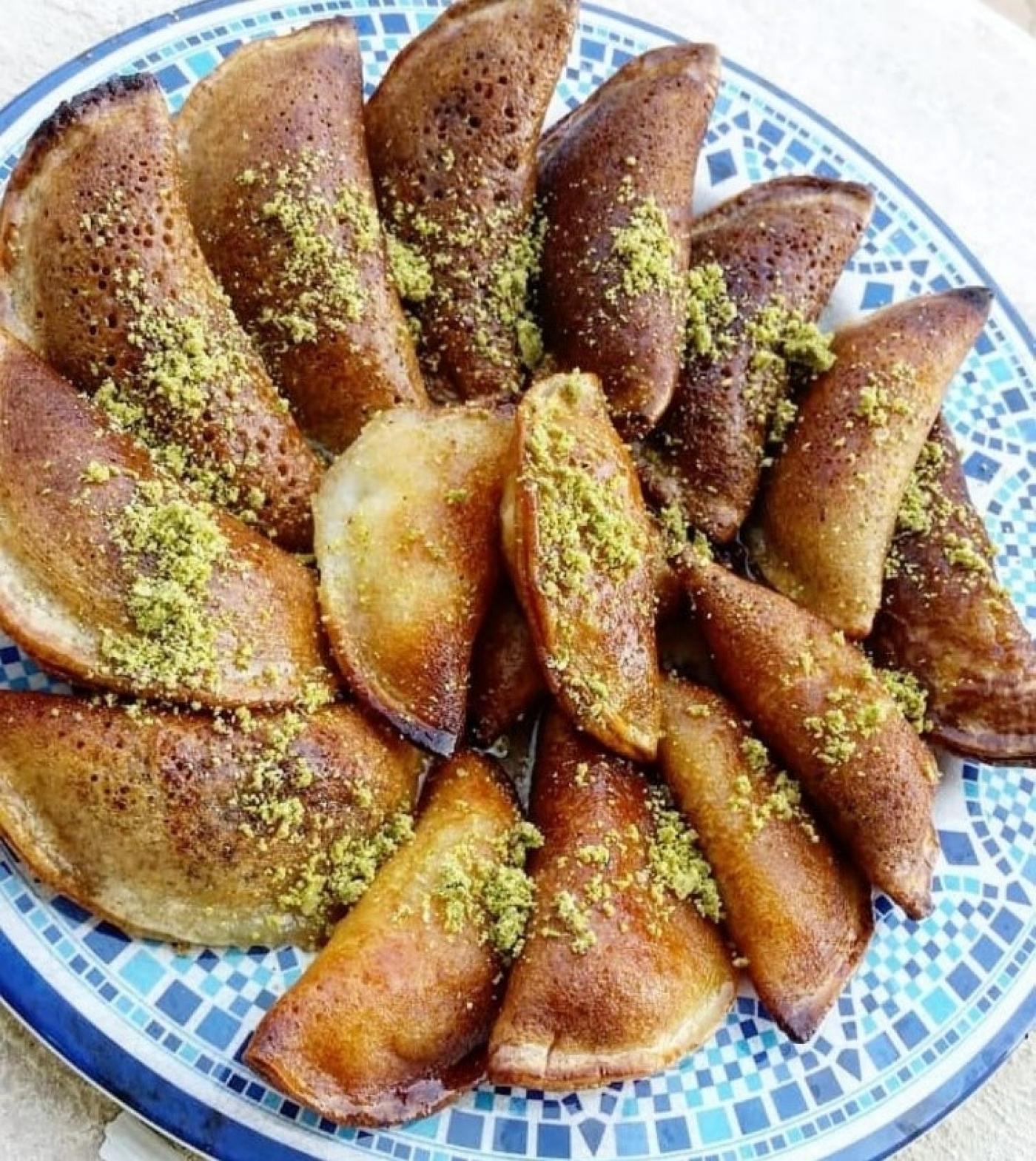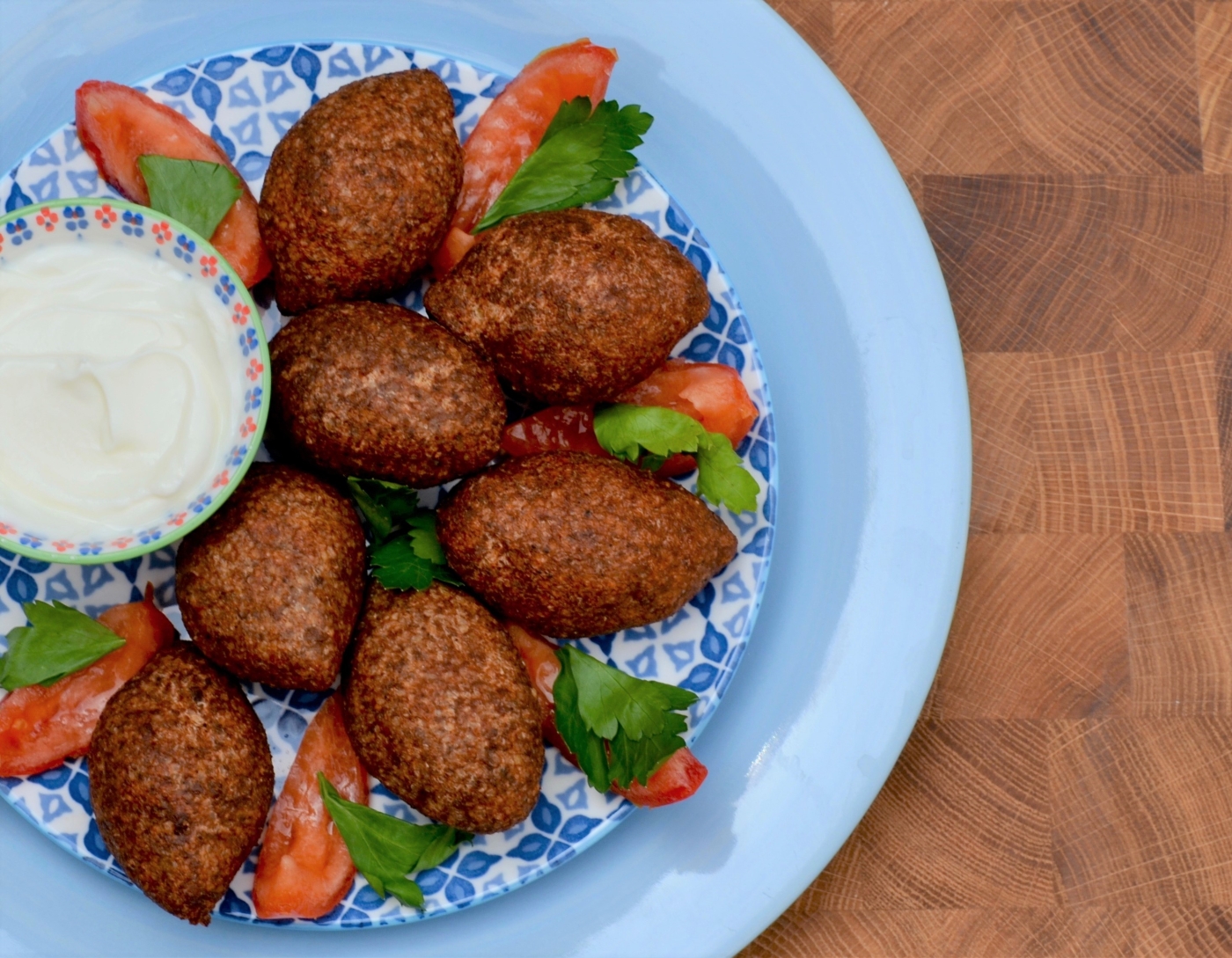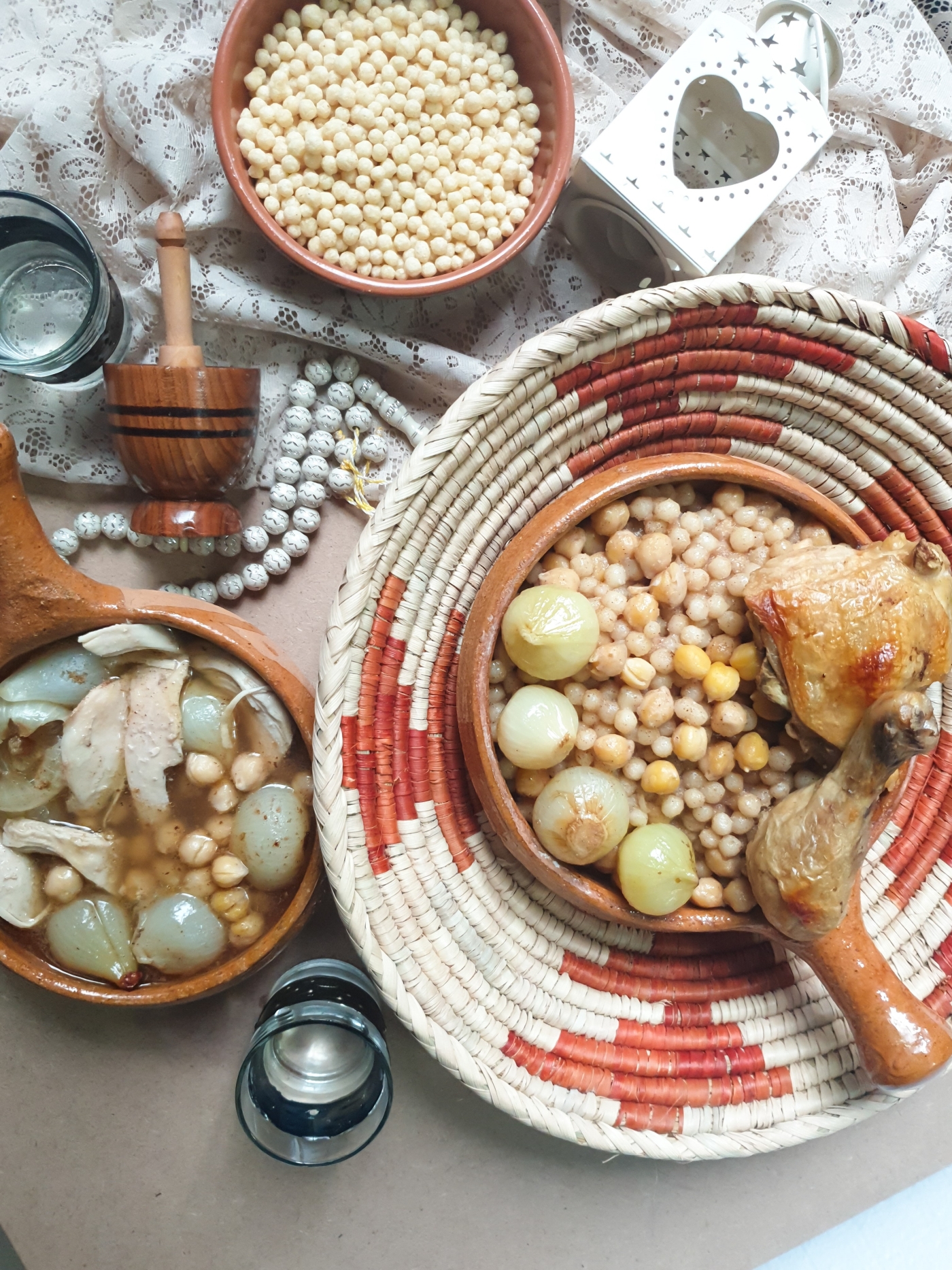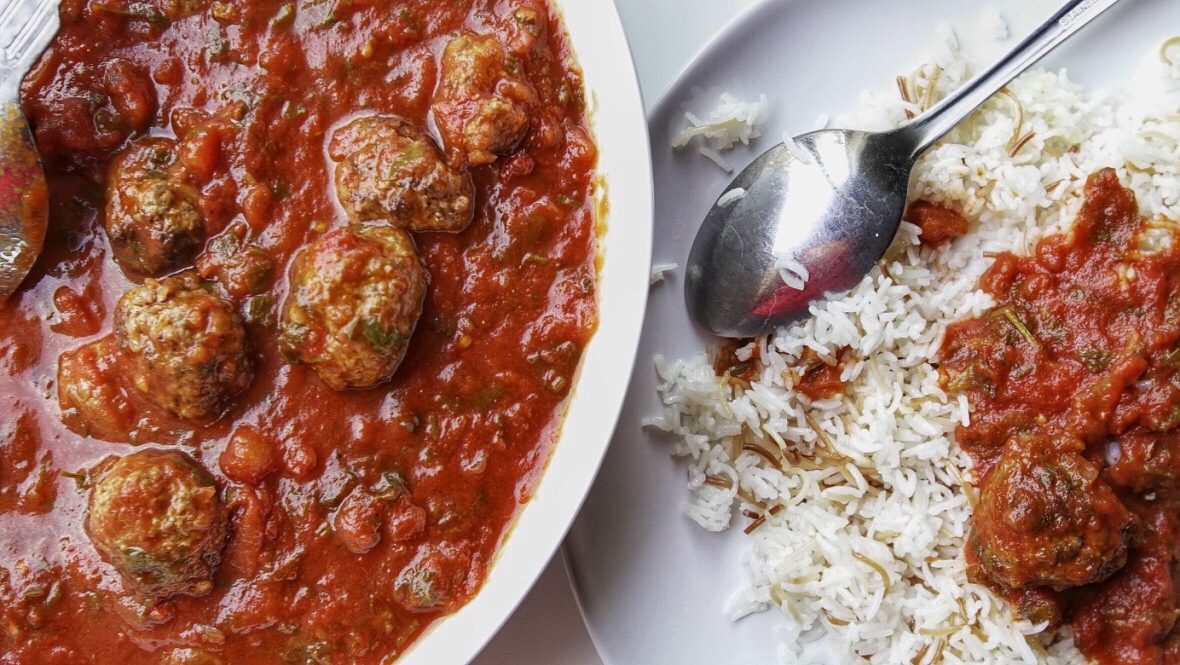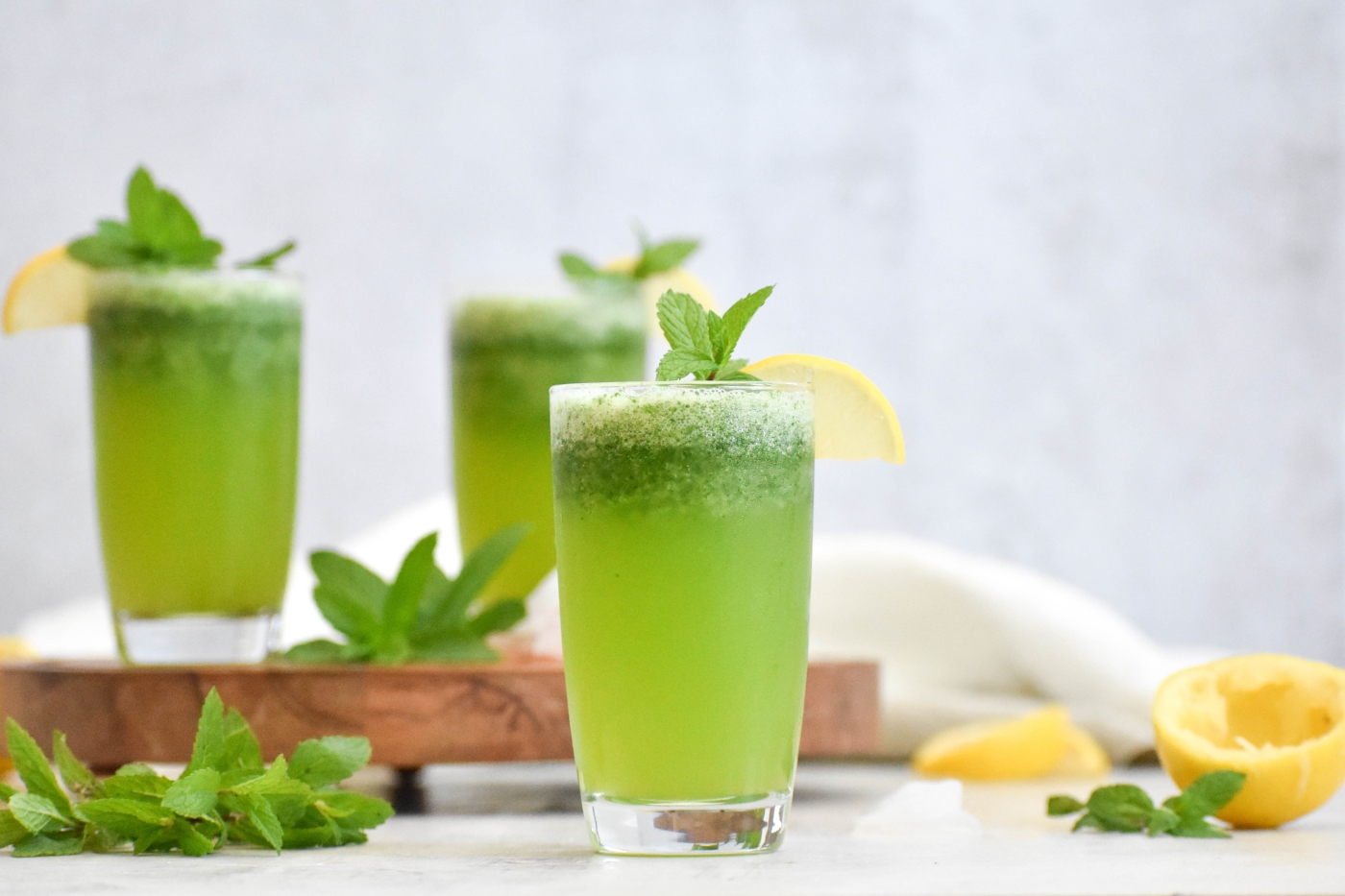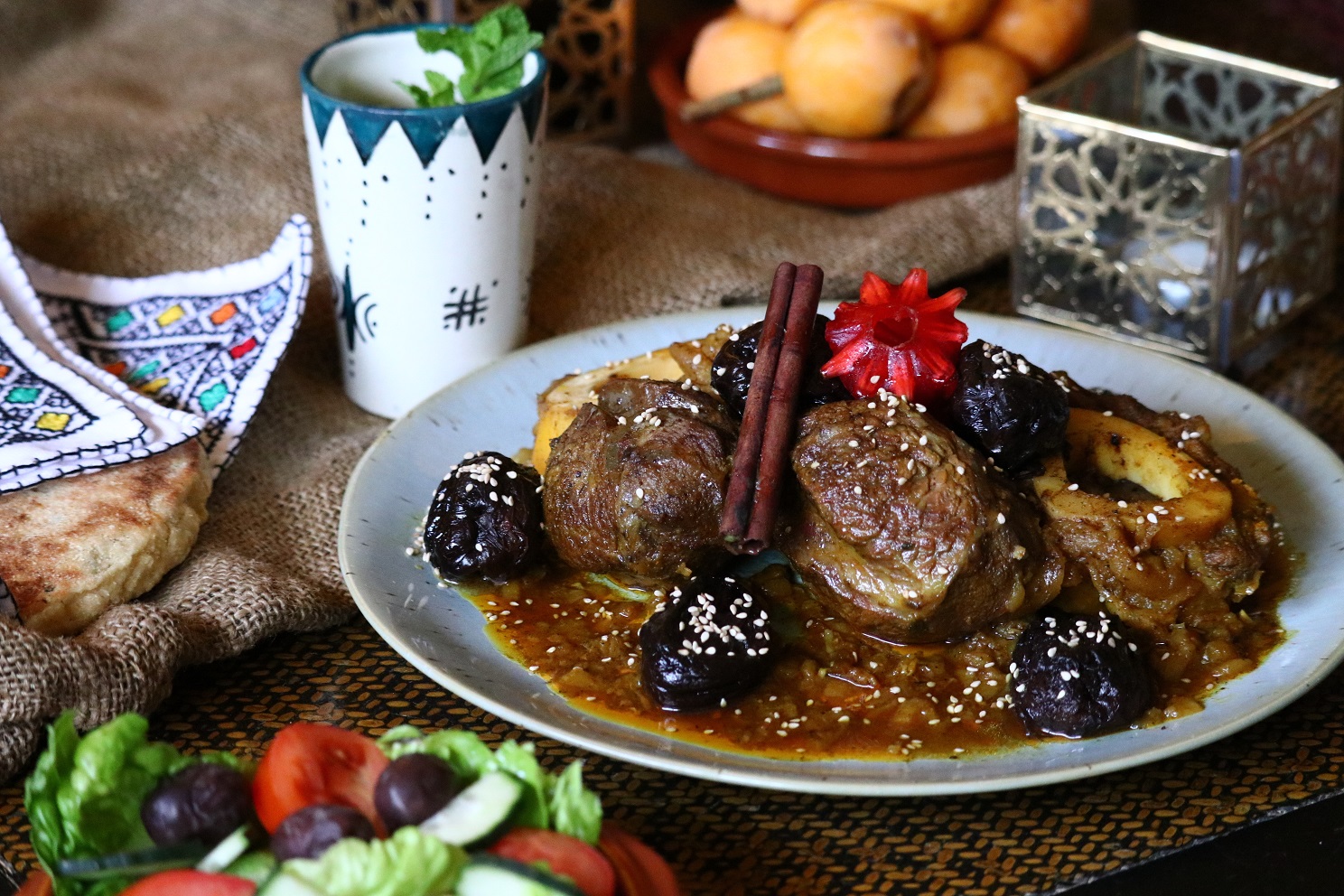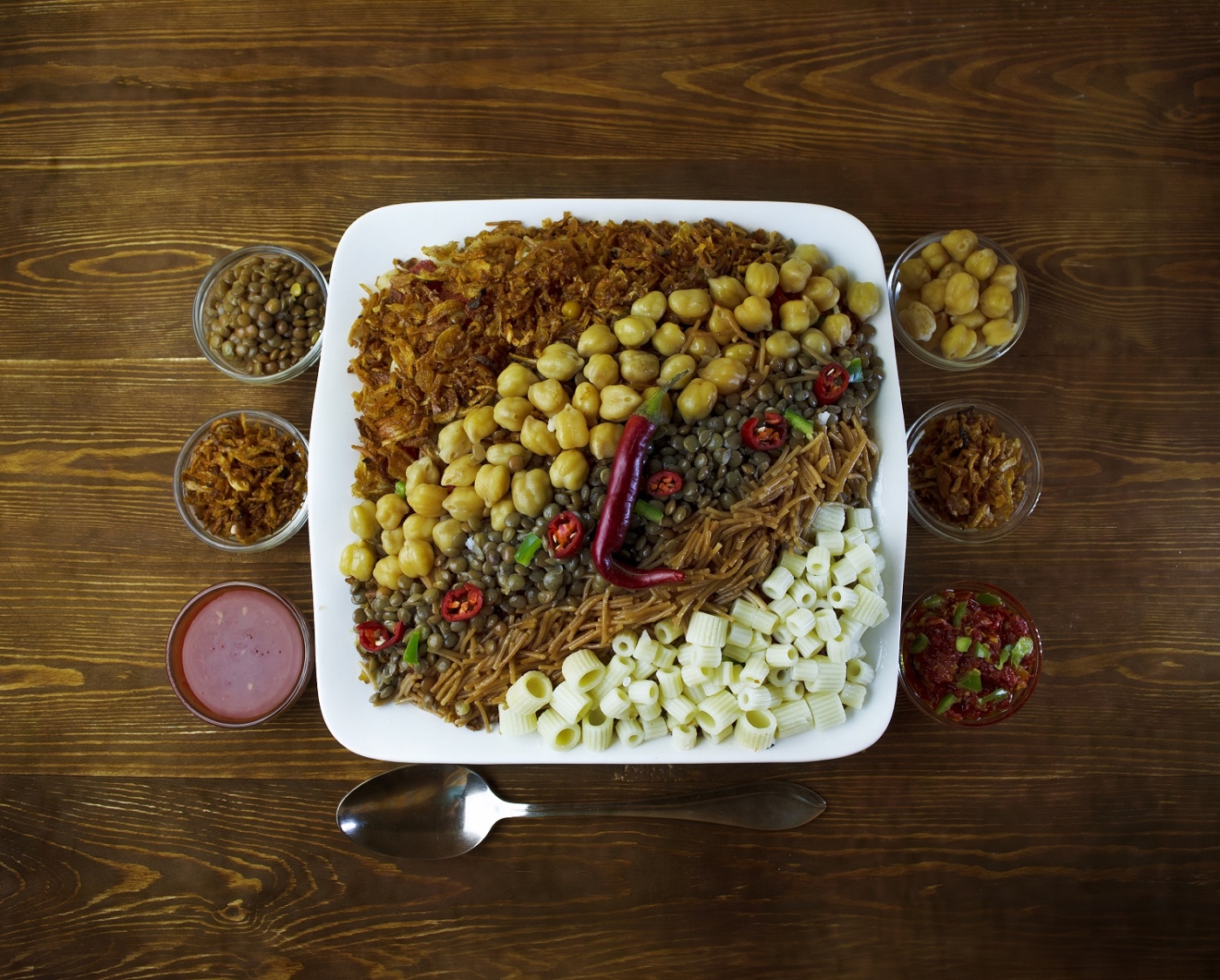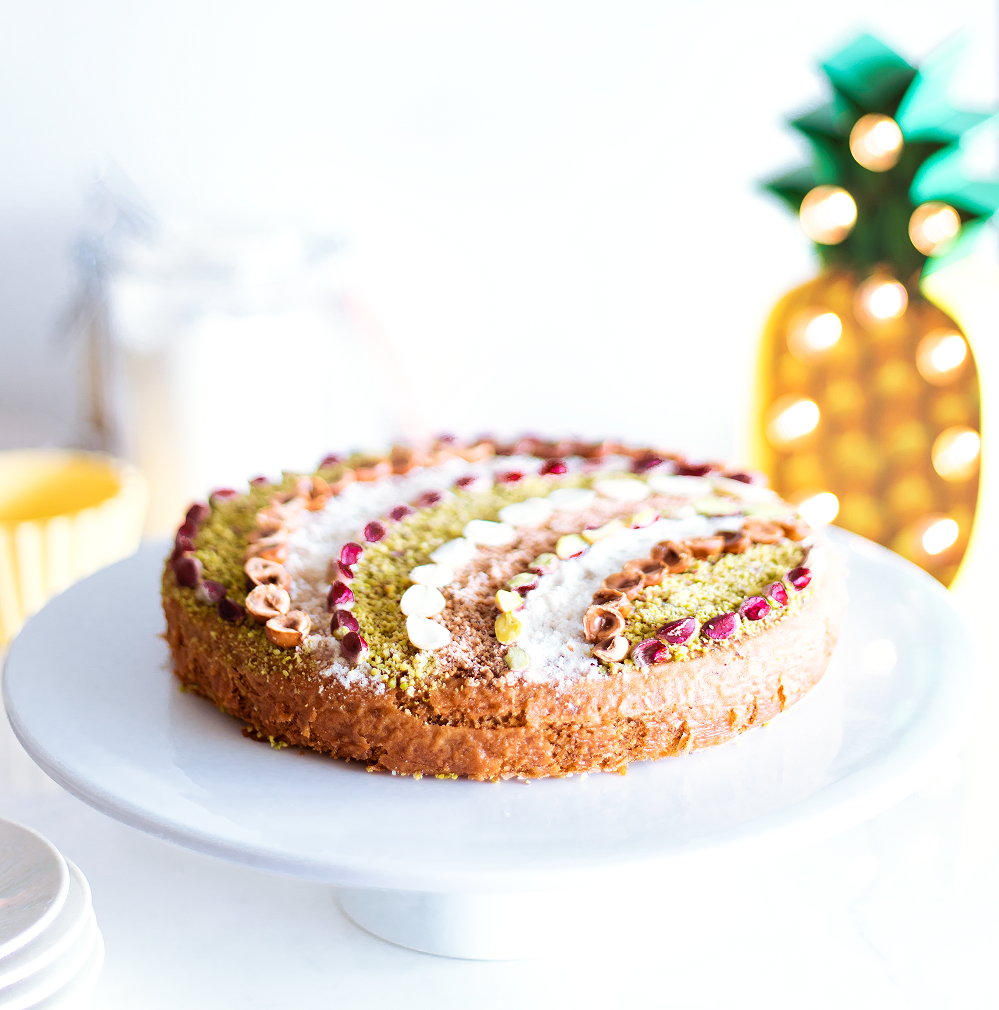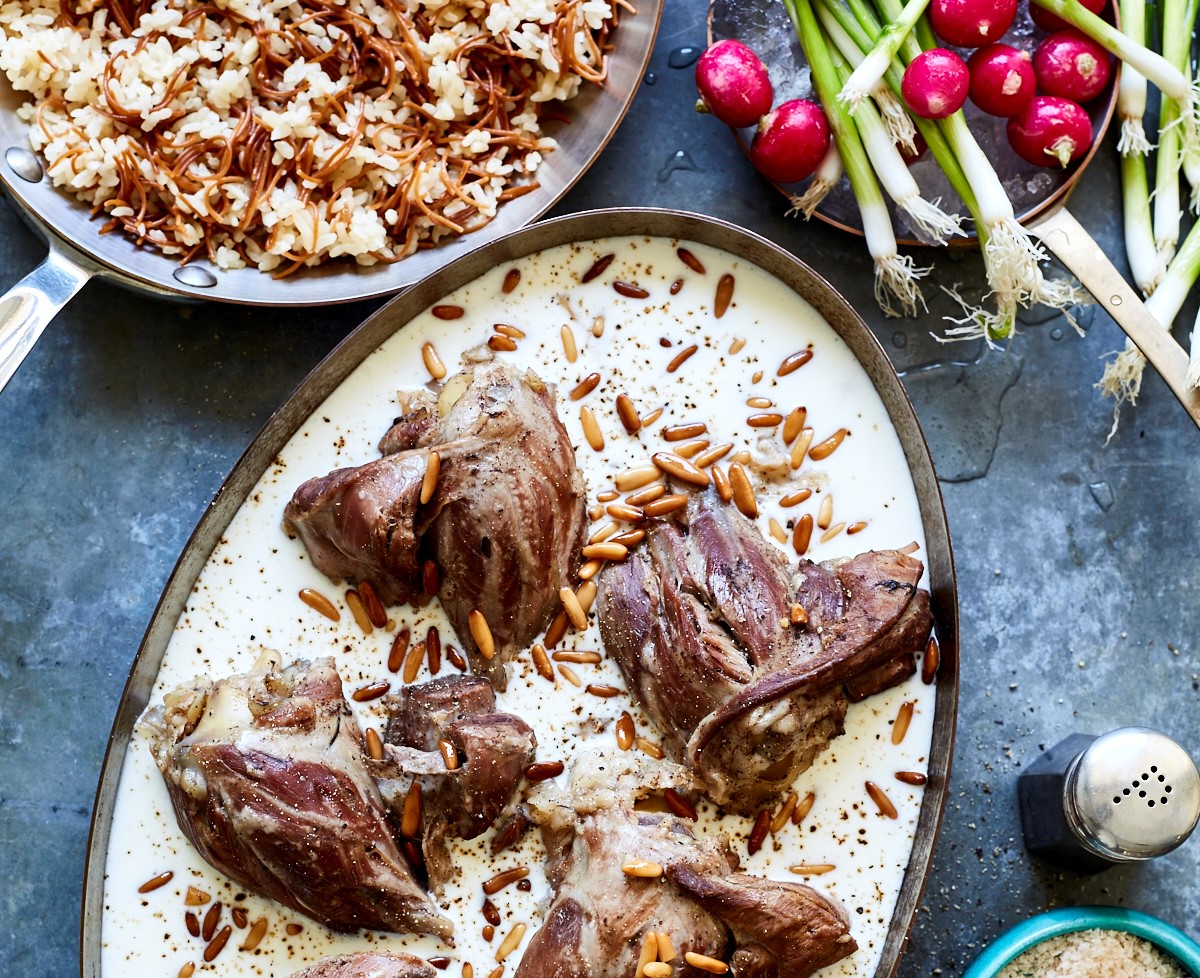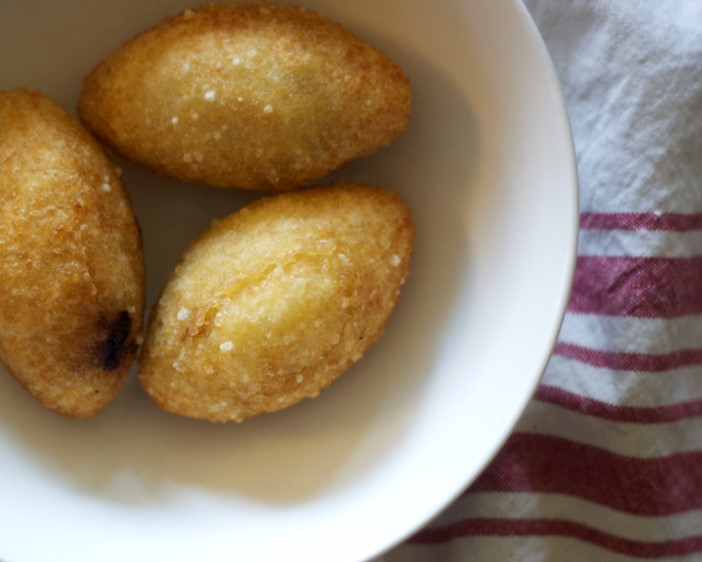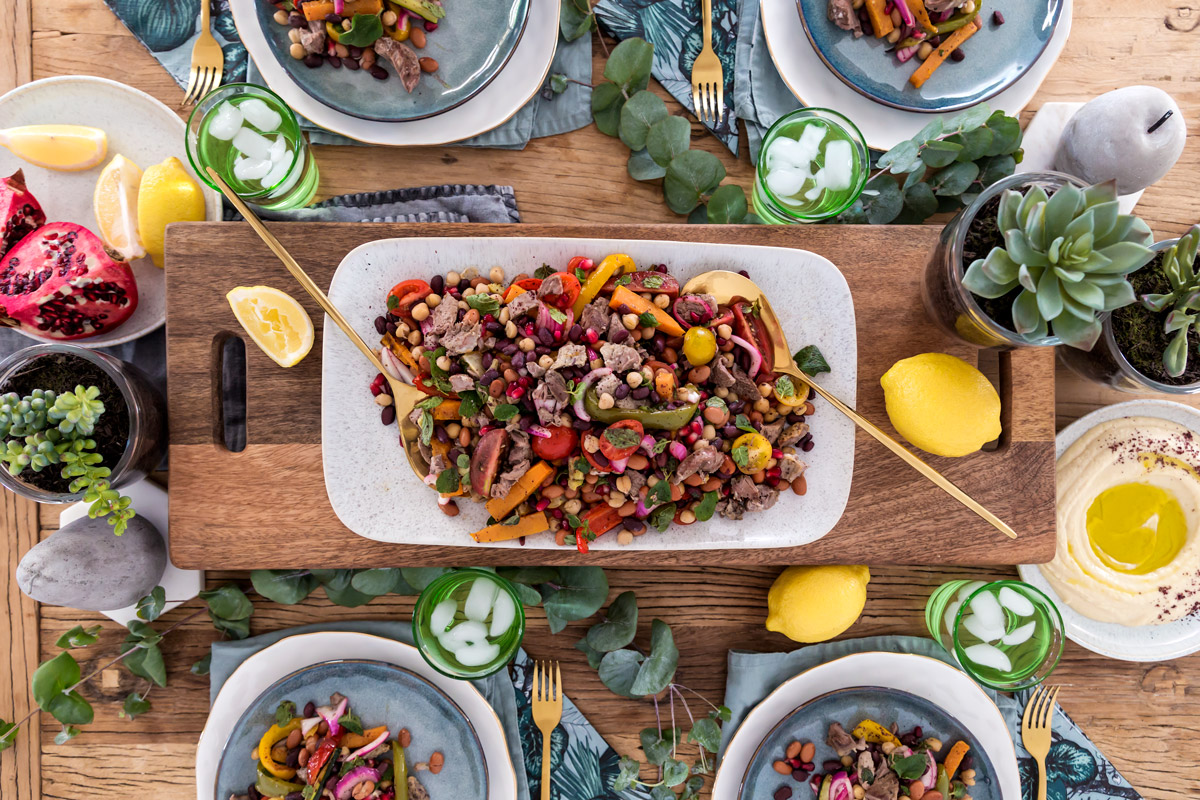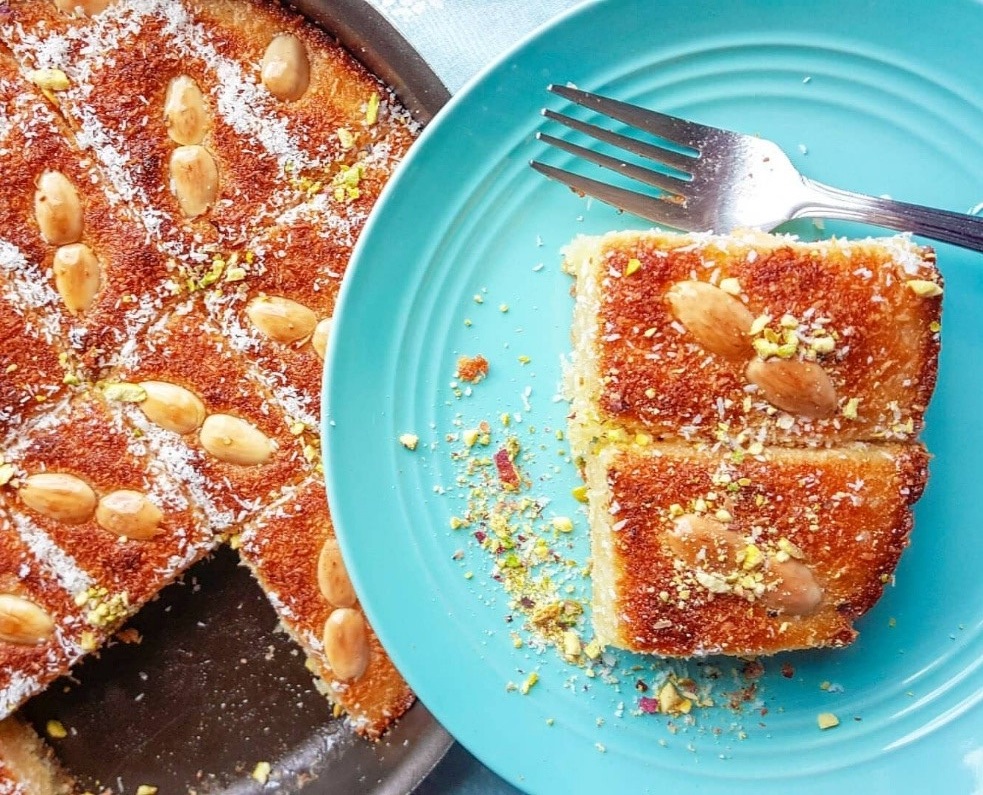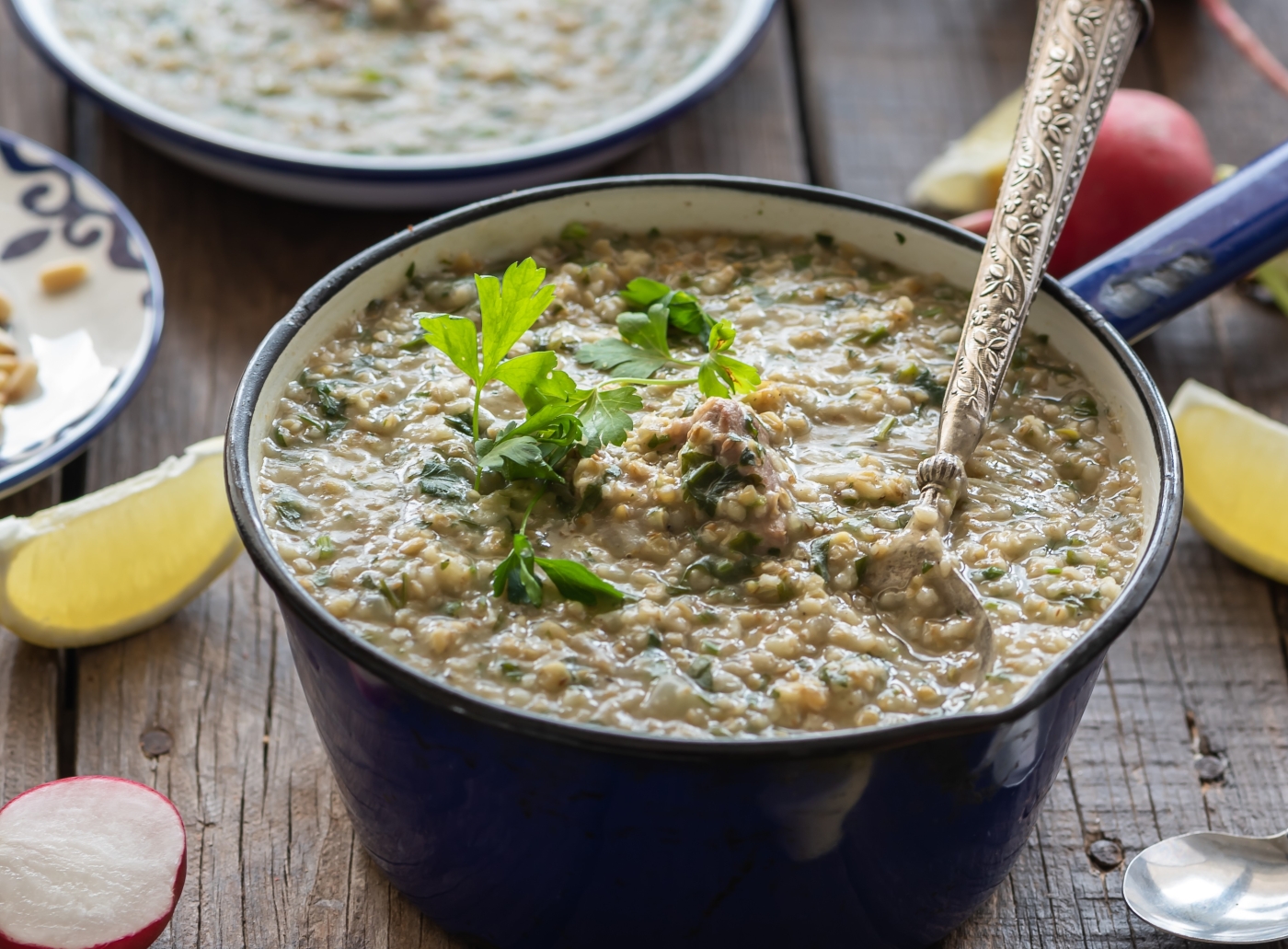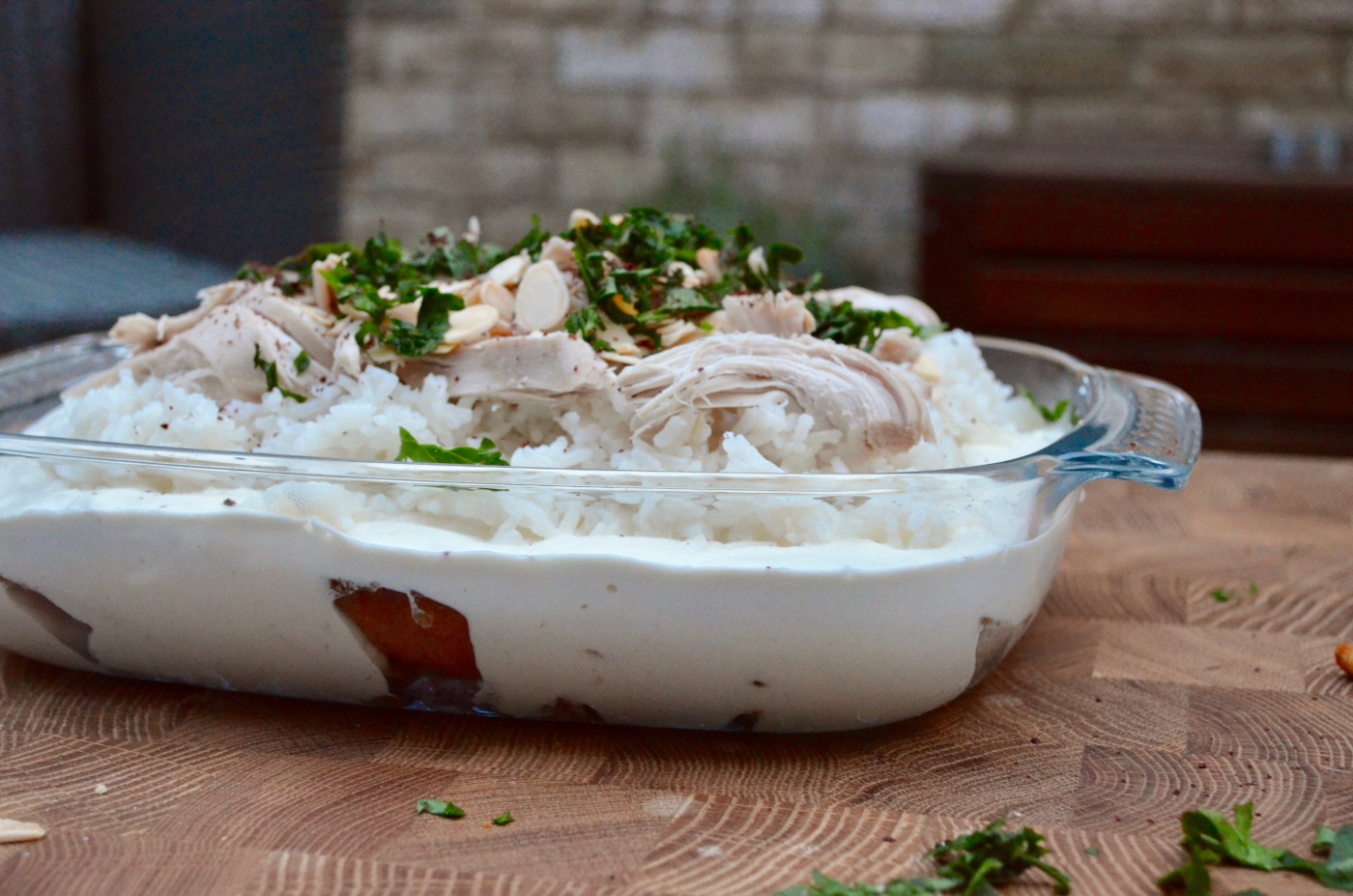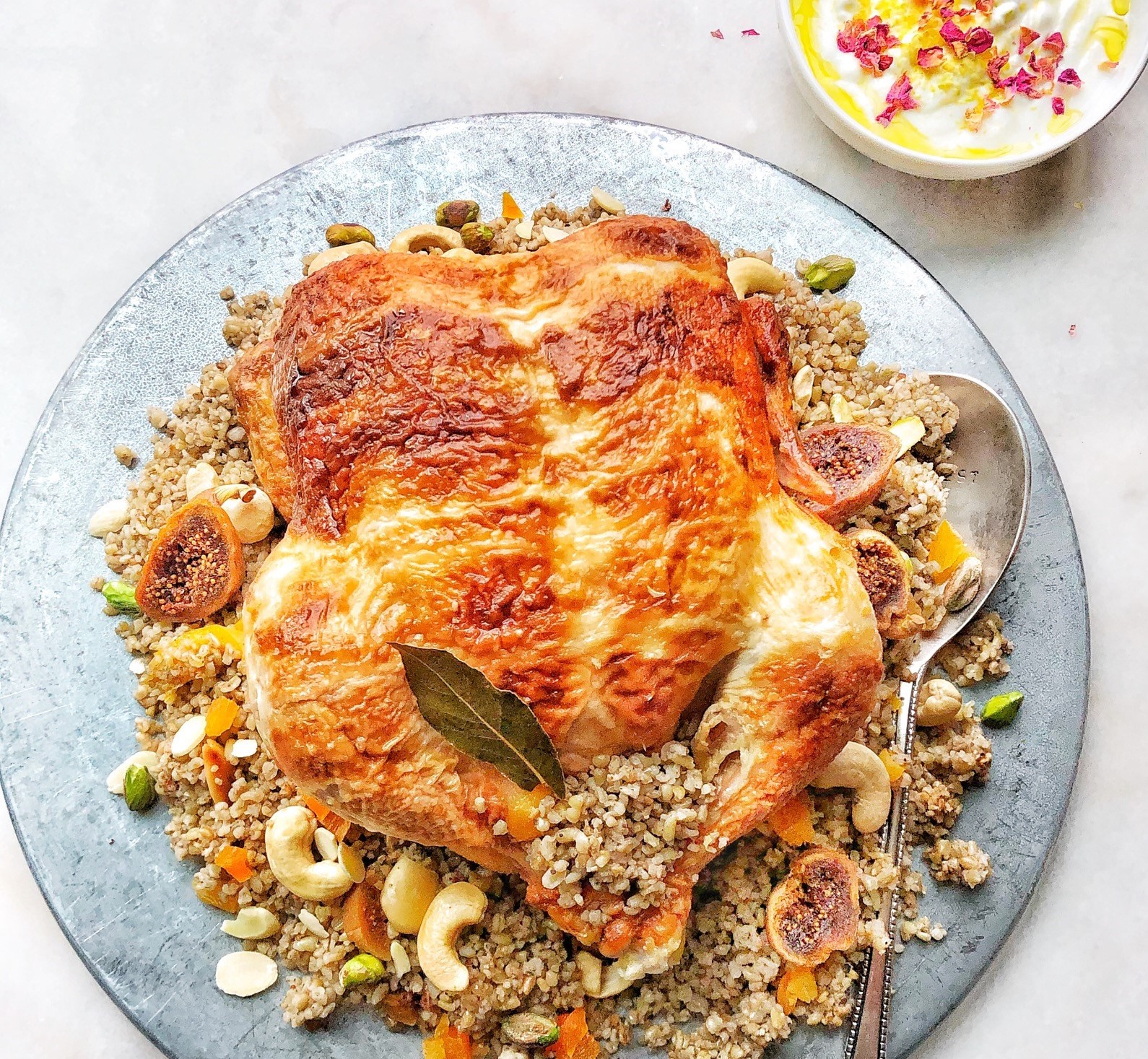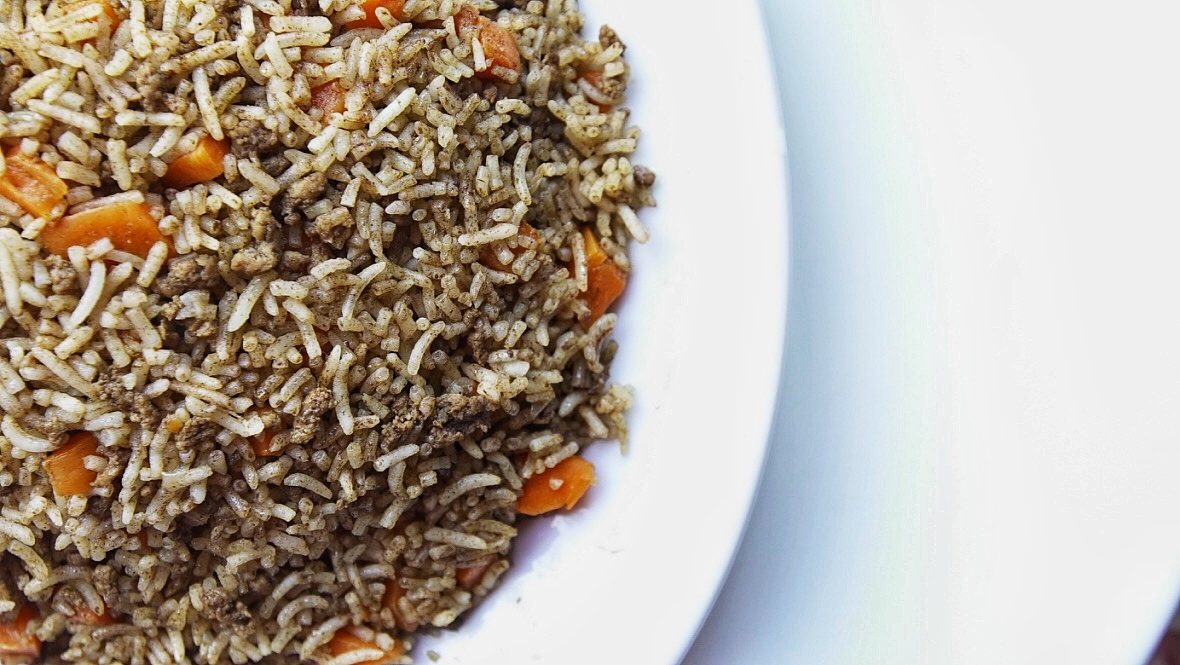32 Middle Eastern recipes you can make at home
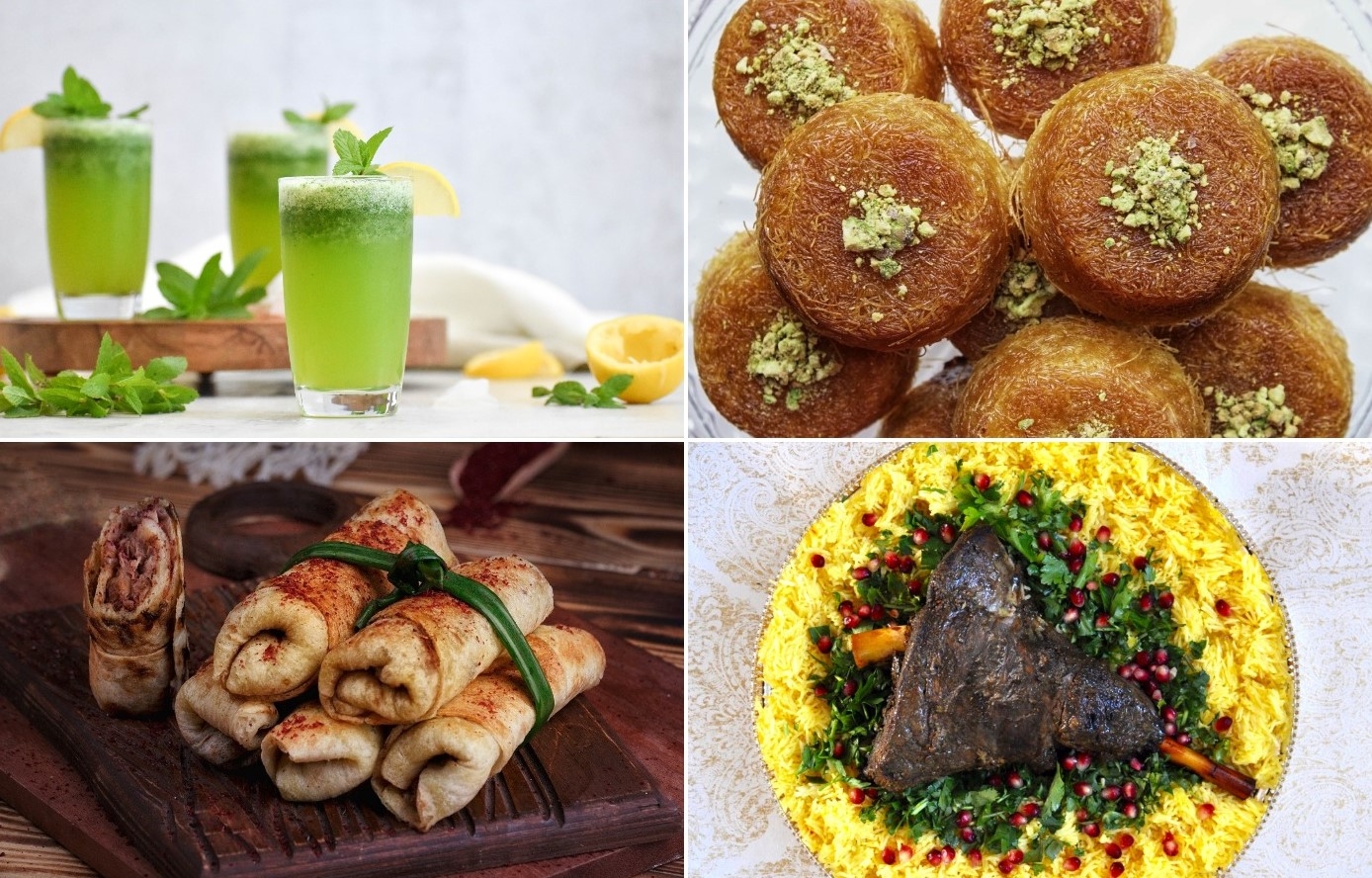
The Middle East and North Africa: home to some of the most vibrant, aromatic and delicious of tastes, ranging from the adventurous and experimental to no-fuss food you can easily throw together in a matter of minutes.
Here we’ve gathered together a list of 32 tried-and-tested recipes from the region, guaranteed to make anyone fall in love with the cuisine.
Some are family favourites, passed down from grandmothers, who would make them for special occasions including Eid and Ramadan. Others are contemporary twists on centuries old diehards, brought up to date for 21stcentury tastes.
Our choices are authentic and wholesome, ranging from an Omani lamb shuwa to a Levantine cheese flatbread. When it comes to the desserts there is, however one rule – the more sugar and syrup, the better.
And don’t blame us if you end up craving everything here…
New MEE newsletter: Jerusalem Dispatch
Sign up to get the latest insights and analysis on Israel-Palestine, alongside Turkey Unpacked and other MEE newsletters
1. Fatayer with spinach and labneh fillings
By Anissa Helou
Fatayers are a quintessential street food in both Lebanon and Syria, sold from bakeries that make them throughout the morning. They are also served in restaurants as part of a mezze spread.
2. Kunafa cups
By Sura Al-Qassab and Nuha Al-Qassab
Kunafa is one of the hallmark desserts of the Middle East, with as many variations on its filling (think cheese, cream, nuts, pastry cream, chocolate, fruit, clotted cream) as on its spelling (it is variously called "kanafeh", "knafe", "kunafah"... you get the idea).
3. Tahini salad
By Marah Abu-Dieyeh and In'aam Shaheen
Tahini salad demonstrates one of the key principles of Palestinian cuisine: simplicity almost always wins. It is, in our opinion, the most delicious oxymoron of a dish which, despite its lightness, freshness and incredible taste, can be eaten with bread as a meal on its own.
4. Cheese-filled pastry rolls (asabe zainab)
Asabe zainab, which translates as "Zainab’s fingers", is a traditional pastry dessert typically eaten during Ramadan. While some Levantine countries make their version with semolina and leave out the filling, in Oman we wrap a creamy-based cheese in filo pastry, deep fry it, then finish it off by soaking it in a rich saffron and cardamom syrup.
Something similar is made in Palestine, where it goes by the great name of "znoud el sit" ("forearms of the lady").
5. Barley breakfast bowl (snayniyeh)
By Marah Abu-Dieyeh and In'aam Shaheen
This nutty and quick breakfast originates from Palestine, where it is known as "snayniyeh" or "aseeda". Easy to prepare, the bowl is packed with nutrients and is extremely filling due to the barley grains and nuts. It is then naturally sweetened with honey, combining a ton of incredible textures.
6. Chicken musakhan rolls
By Lina Issa
Musakhan, which translates into English as "heated up", is one of the most famous and traditional of Palestinian dishes, a perennial favourite on menus that comes to the fore during celebrations such as the olive harvest season.
It's also a strong contender for Palestine's national dish against maqlouba, the chicken, vegetable and rice meal which is famed for being turned upside down.
7. Meat-filled pies (arayes)
By Nur Ashour
Arayes are filling and easy to bake, making them perfect as an appetiser or even as a main with a good side salad. The best part is that they’re so versatile: you can make some spicy while others can be kept mild.
8. Stuffed vine leaves
There's nothing more delicious than a yelanji plate or, as it is more commonly called in English, stuffed vine leaves. This scrumptious vegetarian dish originates from the Levant region around Lebanon, Syria and Palestine.
9. Qatayef
By Marah Abu-Dieyeh and In'aam Shaheen
Qatayef are delectable pillows of batter, cheese and nuts. Their origins date back more than a thousand years to the Abbassid Caliphate, which ruled the Middle East from modern-day Iraq and Iran. A much-sought after treat, they were mentioned in Kitab al-Tabikh (The Book Of Dishes), a cookbook by ibn Sayyar al Warraq, in the 10th century.
10. Fried kibbeh, Aleppo style
Kibbeh meqliyeh is a delicious little Middle Eastern croquette, made from a bulgur and meat shell that's filled with minced meat and nuts. It's a dish especially associated with Aleppo, Syria's largest city, where it comes in dozens of fillings, shapes and sauces.
11. Lebanese couscous (Mograbieh)
Mograbieh is one of Lebanon's major feast dishes, made to be enjoyed by a crowd at social occasions. It's the Lebanese version of Moroccan couscous - the word "mograbieh", when translated into English, means “from Morocco”.
It is made from rolled semolina pearls which are then cooked in a meat or chicken broth. What really gives it a distinct kick is its use of earthy spices such as ground cinnamon and caraway.
12. Meatballs and rice (Dawood basha)
By Sura Al-Qassab and Nuha Al-Qassab
Syria? Lebanon? Iraq? Lots of countries have staked a claim to the origins of dawood basha, a meat-licious stew. If the legend (and the internet) are to be believed, then this dish is named after a famous pasha - or high ranking officer - in the Ottoman Empire.
Dawood basha (we write "basha" instead of "pasha" as there is no letter P in Arabic) is said to have loved this meal so much that he ate it all the time and gave his name to it.
13. Mint lemonade
By Nur Ashour
When I was growing up we visited my family in Jordan every summer. One of my favourite things was to go to the balad - or downtown - where I would work my way through as many local delicacies as possible.
Every corner had some sort of juicing stand, many of which sold mint lemonade. The vendors would squeeze fresh lemons and blend them with mint that was so fragrant you could smell it before you even reached the stall, with ice heaped on so much it turned to slush.
14. Veal tajine with plums
By Houda Tahri
Tajine with dried plums is undeniably one of the most famous of Morocco's dishes, usually served at family occasions or special events, such as iftar during Ramadan.
With many variations across North Africa, it strikes a great balance between sweet and savoury. Serve to an eager social gathering with lots of crusty bread.
15. Koshary
Koshary is the pride and joy of Egyptian cuisine, a chaotic yet delicious concoction celebrated by almost all Egyptians.
At first glance it looks like a random – and hard to cook - mix of spice, garlic and tomato sauce poured over a bed of rice, lentils and pasta, then topped off with crispy onions. Carb free it is not.
16. Hummus
By Nahed Alfar
Hummus is about the most recognisable dish or side in the Middle East and North Africa: every part of every country has their own variation, with each claiming that their version is the best.
17. Omani lamb shuwa
You have not experienced Oman until an Omani has made you shuwa, an incredible Eid delicacy famed around the Gulf.
Its centrepiece is a slow roasted lamb, sheep, goat - or even camel - which is bathed for up to 48 hours in baharat spice, then wrapped in banana leaves and placed in the ground on top of hot coals.
For those outside Oman, careful testing and recipe refinement has ensured that this spice-encrusted dish can also be prepared in a conventional oven.
18. Nut cake from Tunisia (Khobzet fekia)
By Manel Jouini
Khobzet fekia - or nut cake - is a popular Tunisian pastry which is traditionally baked by mothers and grandmothers for family gatherings.
It's a treat to awaken the senses, with the strong smell of the nuts, the intense colour of the pistachios, the texture and sweetness of the almonds and the aroma of the syrup-scented rosewater.
19. Brioche bread from Aleppo (Maarouk)
Maarouk is a sweet and fragrant brioche-like bread that is only made in Aleppo during Ramadan. It can be prepared in different shapes and fillings: here, the recipe includes some which are braided and others which are round and include dates.
20. Creamy lamb stew from Syria (Lamb shakiryeh)
Whenever there was a festive occasion, the Syrian women in my family would make this incredibly tender and tasty stew known as a shakriyeh.
The lamb is simmered in aromatics until tender, which infuses the meat with wonderful flavour. But what's most important is the yoghurt. Syrian dishes are often made with yoghurt sauces - but here it is hot.
21. Fried rice kibbeh from Iraq
Kubba’t halab, to give its Arabic name, is an Iraqi speciality named in homage to Aleppo, which is also known as Halab. It is done in the spirit of competition and respect, as Syria is well known for its excellent kibbeh.
This particular kibbeh is shaped into eggs, using a long-grain rice dough, stuffed with qeema and then deep fried.
22. Lamb salad
By Lina Jebeile
This salad takes as its foundation a Lebanese dish that uses fresh zataar leaves. It's popular especially during Ramadan for a couple of reasons.
First, it's easy to prepare: you can do so a day ahead. All you need do is mix in the dressing just before you serve. Second, while it is light, there is enough here to qualify it as a main rather than a side dish. To that end, I have added the tender grilled lamb, roasted vegetables, beans and chickpeas to make it more balanced.
23. Yemeni Ramadan soup
Each Yemeni family makes their Ramadan soup slightly differently but this is my method, based on what my mum used to cook for the family.
Other traditional versions include varieties of barley or grains, a pinch of ground cardamom and sweet onions.
24. Cheese flatbread (manaeesh)
By Nahed Alfar
Levantine flat bread, known in Arabic as "mana'esh b' jibneh", is topped with a mix of gooey white cheeses which combine well with the crunchy chia-encrusted outside and the fluffy middle. The combination of melted stringiness and pastry comfort make it a popular flavour across Lebanon.
25. Orange and coconut semolina cake
By Marah Abu-Dieyeh and In'aam Shaheen
This syrup-soaked semolina and coconut delight delivers chewiness underneath a crispy, golden crust, as the flavour and aroma of the fresh orange are released with every bite. Sweet and delicate, it's best enjoyed with tea, or perhaps Arabic coffee.
26. Date-filled cookies from Iraq (Kleicha)
By Sura Al-Qassab and Nuha Al-Qassab
If Iraq has a national cookie or biscuit then it has to be the kleicha. No Iraqi can mark a special occasion, religious or otherwise, without this smooth date paste, wrapped in richly spiced dough.
Unlike maamoul, its more famous cookie cousin from the Levant, kleciha dough does not contain semolina. It can also be stuffed with fragrant nut-sugar mixtures such as walnut, sugar and cardamom or even coconut and sugar.
27. Freekeh soup
Freekeh is a common staple in Middle Eastern cuisine, especially in Jordan, Egypt, Lebanon and Syria. It is derived from wheat, which is harvested early while the grains are still tender and green. The seeds are then dehydrated, roasted, dried and cleaned.
28. Chicken fatteh
The Arabic word "fatteh" comes from an verb meaning to "shred" or "tear apart", in reference to the torn pieces of pitta that form the base of these dishes. It's a well-chosen name for a variety of dishes, built on layers of ingredients including chickpeas, stuffed aubergines, artichokes, stewed meat or tahini and garlic yoghurt.
Chicken fatteh is often eaten at the beginning of Ramadan or the start of the year: the tradition is that the whiteness of the yoghurt and of the rice symbolise good luck and a pure beginning.
29. Date-filled biscuits (makrouta)
By Nur Ashour
Makrouta is just as good as maamoul, another Middle Eastern biscuit treat, but so much easier to bake. It consists of layers of flaky dough and sweet dates, with a touch of crunch coming from the sesame seeds, anise seeds and nigella seeds. You can also store it for up to one month in a sealed container.
30. Stuffed aubergines (Fatteh't makdous)
This fatteh from Syria bursts with different textures and flavour, thanks to the garlic tahini yoghurt, the soft aubergine, the crunchy bread and those nuts.
31. Stuffed chicken with freekeh
By Mai Kakish
Arab cooks take much pride in their dishes, especially those prepared for a special occasion or celebration. Stuffed meats and vegetables take centrepiece at family gatherings during the holy month of Ramadan, using ingredients which are often seasonal and fresh.
Few meals are as popular as chicken stuffed with freekeh (a green roasted wheat). Delicious and nutritious, the pilaf is topped with toasted nuts and chewy dried fruits to further sweeten the taste.
32. Rice with carrots (timman bil jizar)
By Sura Al-Qassab and Nuha Al-Qassab
What fits the bill of being both light and hearty to fill that gap? Enter timman bil jizar, a delicious dish which ticks lots of boxes for us during Ramadan ("timman" is the Iraqi word for "rice"- and in our opinion, the right word - while "jizar" means carrots).
It's tasty, quick to make and smells amazing, with a versatility that makes it popular in our household. It can be enjoyed on its own, with a fresh salad, with plain yoghurt, even converted into a vegetarian dish by substituting the mince for mushrooms or vegetarian mince.
Middle East Eye delivers independent and unrivalled coverage and analysis of the Middle East, North Africa and beyond. To learn more about republishing this content and the associated fees, please fill out this form. More about MEE can be found here.


